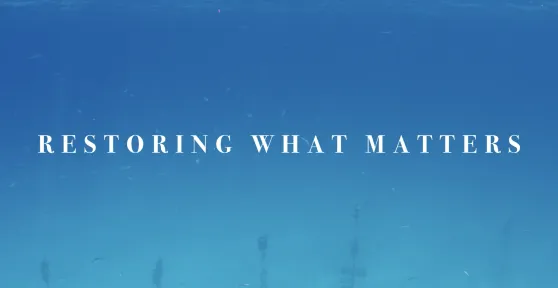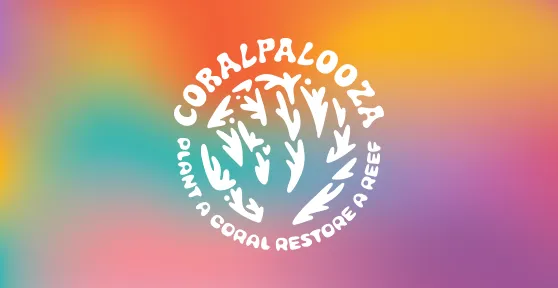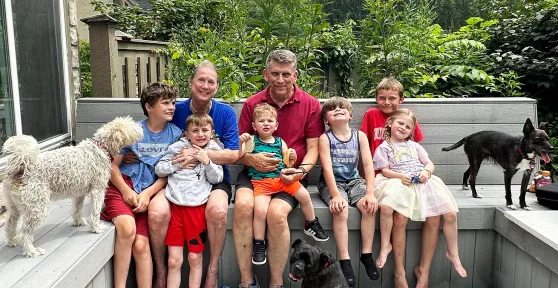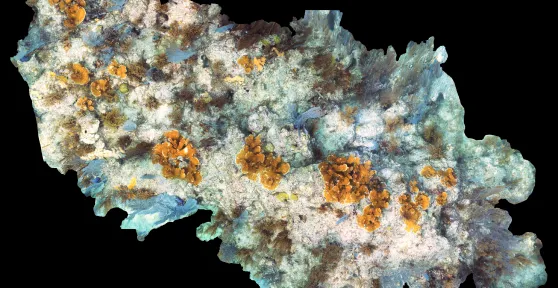Once a year, at the end of summer, lunar and environmental cues trigger staghorn and elkhorn corals on Florida’s Reef to reproduce through broadcast spawning, releasing buoyant bundles of eggs and sperm into the water.
These bundles rise to the surface, where they break apart and fertilization occurs. The resulting embryos develop into larvae called planulae, which drift until they find a hard surface to settle and grow into new colonies.
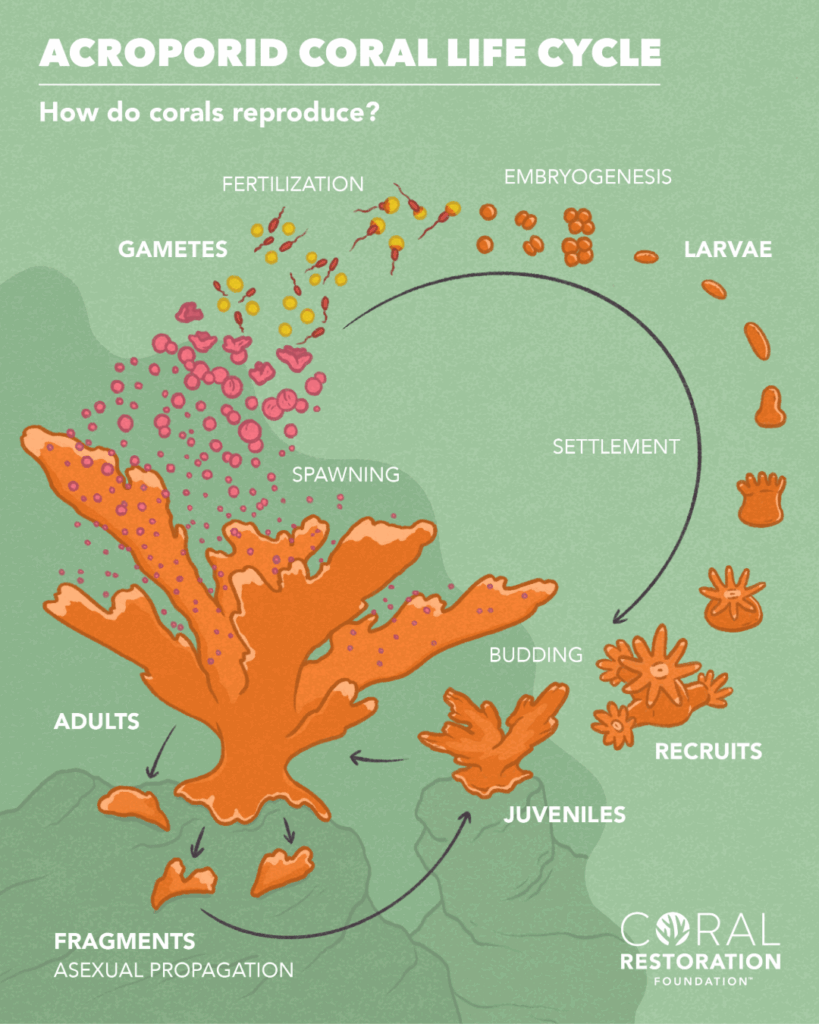
Graphic: Granger Eltringham for Coral Restoration Foundation™
Coral spawning is one of nature’s most extraordinary events and for Coral Restoration Foundation™ (CRF™), this natural phenomenon is both a wonder to witness and a vital opportunity to strengthen restoration science.
How We Monitor, Collect, and Protect Coral Gametes
During the spawning event, CRF™ divers monitor colonies for “setting,” the stage when gamete bundles become visible in the polyps. Once setting begins, a mesh tent is placed over the coral to capture the gametes as they are released. These gametes are then transferred to collaborators for fertilization and research.
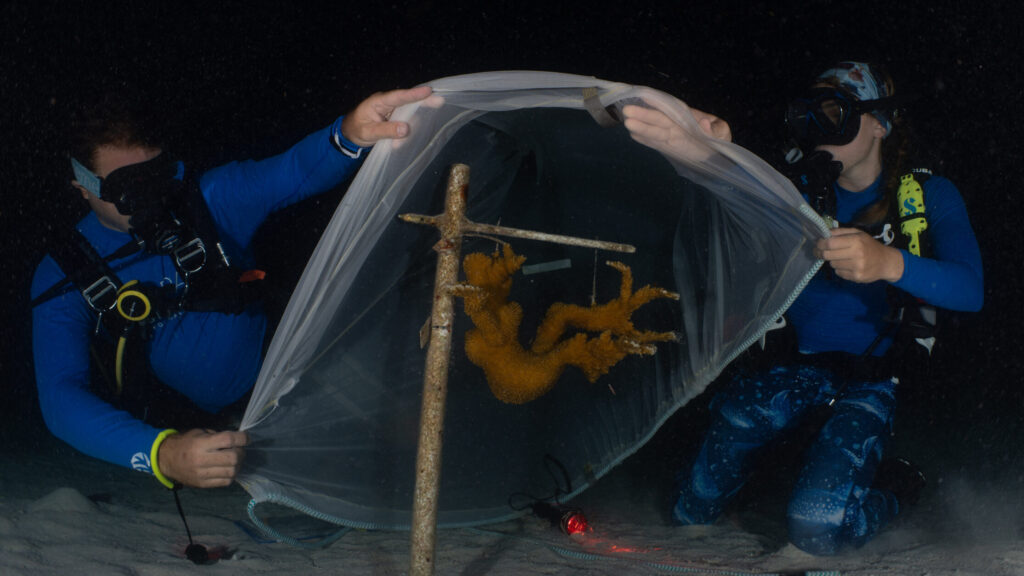
Two key collaborations this year:
- At-sea fertilization and larval rearing: Gametes were fertilized and reared directly aboard Shedd Aquarium’s mobile research vessel, eliminating transport stress and allowing larvae to develop under natural seawater conditions. Tens of thousands of larvae were successfully reared, with many settled back onto specially designed substrates in the nursery to test their survival and growth. (Read more about it here)
- Cryopreservation: SEZARC successfully cryopreserved gametes from 17 new staghorn genotypes. This builds on an effort that began in 2017, creating a genetic library that can be thawed and used for fertilization in future years, safeguarding biodiversity with certainty.
Settlement tiles and new rebar A-frame structures were also introduced this year, enabling larvae to settle and continue their development within our nurseries — a step toward completing the entire reproductive cycle in situ.
From Bleaching to Breakthroughs
The 2023 global bleaching event devastated Florida’s reefs, triggering stress spawning that yielded mostly non-viable gametes. 2024 brought similar challenges, as corals continued to recover from this disturbance.
Despite these setbacks, CRF™ prioritized genotypes rarely seen spawning, and in 2024, several spawned for the first time. By 2025, with healthier stock and conditions improving, spawning activity increased significantly. At our Tavernier Nursery, we observed 27 staghorn and one elkhorn genet spawning successfully, with many more likely spawning outside of our viewing and collecting area- a milestone that underscores the resilience of these corals and the impact of long-term restoration work.

Photo: Granger Eltringham for Coral Restoration Foundation™
Why Spawning Is Essential
Spawning research allows CRF™ to monitor coral health, assess resilience, and identify critical stages where reproduction may falter. As CRF™ Science Program Manager Alex Neufeld explains, the goal is to “ensure that the corals that we are growing in the nursery are healthy and doing things naturally the way that they are supposed to, even in the face of climate change and all of these local and regional stressors.”
Insights gained during these events shape restoration strategies, from advancing larval settlement techniques to safeguarding genetic diversity for future use.
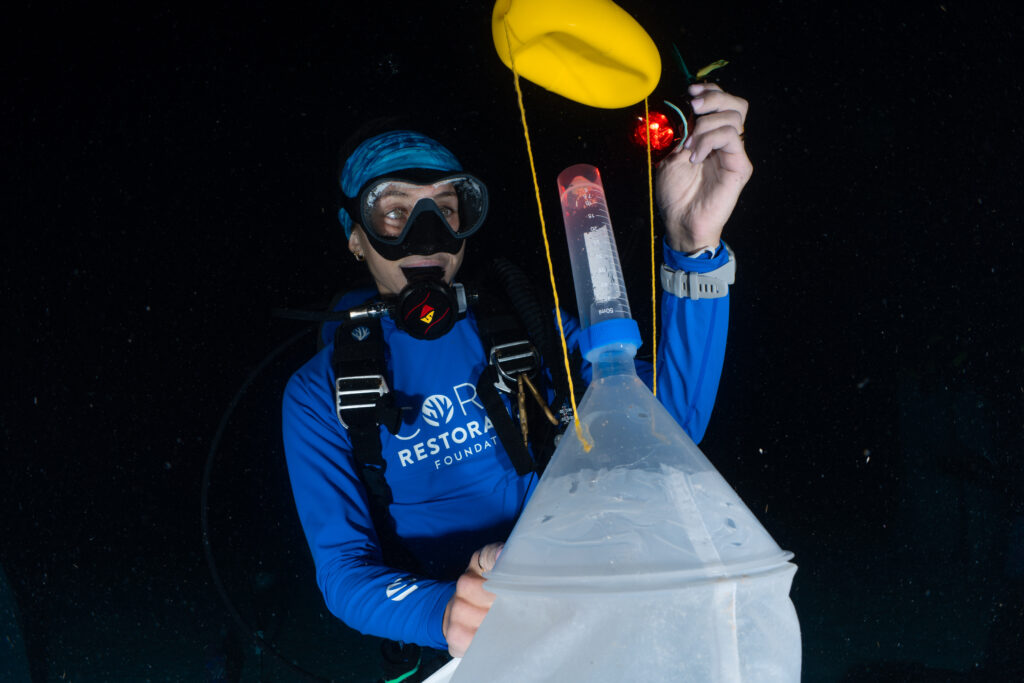
The Future of Spawning Research at CRF™
CRF™’s science team is working toward completing the full coral reproductive cycle within our nurseries, from spawning through larval settlement to adult colonies. This will allow us to better identify the process’ bottlenecks in the wild and apply solutions directly to restoration pipelines.
As Neufeld puts it, “Producing corals that can reproduce on their own is an important part of the restoration tool kit that we’re building all the time at CRF.” Future efforts will also expand elkhorn spawning research, as these corals take longer to reach sexual maturity, and increase monitoring of outplanted colonies during spawning events to measure long-term reproductive success.
Coral spawning represents both the fragility and the resilience of reef ecosystems. Each gamete released carries the potential to create genetically diverse, resilient corals capable of thriving on reefs for generations to come.
